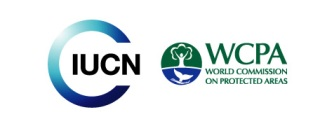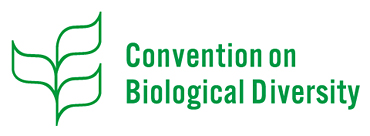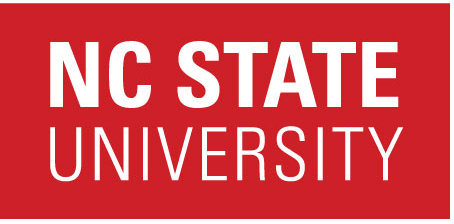Management Principles and Processes
Chapter Coordinator: Yu-Fai Leung
Chapter contributors: Yu-Fai Leung, Robert Manning, Anna Spenceley, Lincoln Larson, Anna Hübner, Chelsey Walden-Schreiner, Dilya Woodward, Alexandra Vishnevskaya
Chapter 6 Table of Contents
6.1 Introduction
6.2 The Precautionary Principle
6.3 Management Principles
6.4 Management Planning Frameworks
- 6.4.1 Recreation Opportunity Spectrum
- 6.4.2 Protected Areas: The Commons and Carrying Capacity
- 6.4.3 Limits of Acceptable Change
- 6.4.4 Indicators and Standards of Quality
- 6.4.5 A Threefold Park and Tourism Management Framework
6.5 Tourism and Visitor Management Planning Process
6.6 Community Engagement
6.7 Management Planning for Commercial Tourism and Individual Visitors
- 6.7.1 Commercial Tourism Management
- 6.7.2 Individual Visitor Management
6.8 Guidelines
References
- Akimat. ‘Social Economic passport of Talgar region’. <http://www.akimat-talgar.gov.kz/p/pasport_2010>
- Allen, C. R., Fontaine, J. J., Pope, K. L., & Garmenstani, A. S. (2011). ‘Adaptive management for a turbulent future’. Journal of Environmental Management, 92:1339-1345.
- Borrie, W. T., McCool, S. F., and Stankey, G. H. (1998). Protected area planning principles and strategies. In: K. Lindberg, M. E. Wood, & D. Engeldrum (eds.) Ecotourism: A Guide for Planners and Managers (Vol 2) (pp. 133-154). North Bennington, VT: The Ecotourism Society.
- Brown, P., B. Driver, and C. McConnell. (1978). ‘The Opportunity Spectrum Concept in Outdoor Recreation Supply Inventories: Background and Application’. Proceedings of the Integrated Renewable Resource Inventories Workshop. USDA Forest Service General Technical Report RM-55, 73-84.
- Brown, P., B. Driver, D. Burns, and C. McConnell. (1979). ‘The Outdoor Recreation Opportunity Spectrum in Wildland Recreation Planning: Development and Application’. First Annual National Conference on Recreation Planning and Development: Proceedings of the Specialty Conference (Vol. 2). Washington, DC Society of Civil Engineers, 1-12.
- Brown, G., Koth, B., Kreag, G., and Weber, D. (2006). Managing Australia's Protected Areas: Review of Visitor Management Models, Frameworks and Processes. Gold Coast: CRC Sustainable Tourism.
- Brown, J. and Hay-Edie, T. (2013). COMPACT: Engaging local communities in the stewardship of World Heritage. New York: UNDP. Online Resource
- Clark, R., and G. Stankey. (1979). The Recreation Opportunity Spectrum: A Framework for Planning, Management, and Research. USDA Forest Service Research Paper PNW-98.
- Driver, B. and P. Brown. (1978). ‘The Opportunity Spectrum in Outdoor Recreation Supply Inventories: A Rationale’. Proceedings of the Integrated Renewable Resource Inventories Workshop. USDA Forest Service General Technical Report RM-55, pp. 24-31.
- Dzhanyspayev, A.D. (2006). Almaty Reserve. In: Ivashenko A. A. (ed.) Nature Reserves and National Parks of Kazakhstan, pp. 62-81. Almaty: Almatykitap.
- Eagles, P.F.J., McCool, S.F., and Haynes, D.C.A. (2002). Sustainable Tourism in Protected Areas: Guidelines for Planning and Management. Gland, Switzerland; Cambridge, UK: IUCN.
- Europarc Federation (2012). Practical, Profitable, Protected: A Starter Guide to Developing Sustainable Tourism in Protected Areas. Europarc Federation.
- Frissell, S., and G. Stankey. (1972). ‘Wilderness environmental Quality: Search for Social and Ecological Harmony’. Proceedings of the Society of American Foresters annual Conference. Hot Springs, AR: Society of American Foresters, 170-83.
- GEF Small Grants Program. (2012). Community action. Global impact. <https://sgp.undp.org/index.php?option=com_content&view=article&id=103&Itemid=165#.UvjT2vZkL0P>.
- GIZ. (2013). Phong Nha-Ke Bang National Park Region: Nature conservation and sustainable management of natural resources. <http://www.pnkb-quangbinh.org.vn/>
- GIZ. (2014a). Integrated nature conservation and sustainable management of natural resources in Phong Nha-Ke Bang National Park. <http://www.giz.de/en/worldwide/18650.html>.
- GIZ. (2014b). Tourism as a part of integrated development planning and nature conservation. [Brochure].
- GIZ. (2014c). Tourism Planning in Development Cooperation: A Handbook. Eschborn. Online Resource
- Graefe, A., Vaske, J. and Kuss, F. (1984). ‘Social Carrying Capacity: An Integration and Synthesis of Twenty Years of Research’. Leisure Sciences 8:275-95.
- Hadwen, S., and Palmer, L. (1922). Reindeer in Alaska. U.S. Department of Agriculture Bulletin 1089.
- Hardin, G. (1968). The Tragedy of the Commons. Science 162:1243-48.
- Hay-Edie, T., Murusuri, N., Cortes, J.M., and Brown, J. (2012). Engaging local communities in World Heritage sites: Experience from the Community Management for Protected Areas Program. In: S. Weber (Ed.), Rethinking Protected Areas in a Changing World: Proceedings from the 2011 George Wright Society Biennial Conference on Parks, Protected Areas, and Cultural Sites. Hancock, MI: The George Wright Society. <http://www.georgewright.org/1125hay-edie.pdf>.
- Hübner, A. Phong, L.T., and Chau, T.S.H. (2014). Good governance and tourism development in protected areas: The case of Phong Nha-Ke Bang National Park, Central Vietnam. Koedoe, 56(2), 10pp.
- Instituto National de Cultura (INC). (2005). Plan maestro del santuario historico de Machupicchu. Cusco, Peru: Instituo Nacional de Cultura, Instituo Nacional de Recursos Naturales y Dirección Regional de Cusco. Accessed 14 March 2013. Online Resource
- Interagency Visitor Use Management Council [Web Site]. Accessible from: http://visitorusemanagement.nps.gov/ Online Resource
- IUCN (2011). Guidelines for Protected Areas Legislation. IUCN, Gland, Switzerland. xxvi + 370 pp.
- IUCN-WCPA (2007). Guidelines for Applying the Precautionary Principle to Biodiversity Conservation and Natural Resource Management. As approved by the 67th meeting of the IUCN Council, 14–16 May 2007. Available at http://cmsdata.iucn.org/downloads/ln250507_ppguidelines.pdf
- Larson, L. R., and Poudyal, N. C. (2012). Developing sustainable tourism through adaptive resource management: a case study of Machu Picchu, Peru. Journal of Sustainable Tourism, 20(7), 917-938.
- Leopold, A. (1934). A Sand County Almanac. New York: Oxford University Press.
- Leung, Y.-F., Marion, J. L., & Farrell, T. A. (2008). Recreation ecology in sustainable tourism and ecotourism: a strengthening role. In: S. F. McCool, & Moisey R. Neil (eds.), Tourism, Recreation and Sustainability: Linking Culture and the Environment (2nd Ed. ed., pp. 19-37). Wallingford, UK: CABI Publishing.
- Lucas, R. C. (1964). Wilderness perception and use: The example of the Boundary Waters Canoe Area. Natural Resources Journal, 3, 394-411.
- Malthus, T. (2003 [1798]). An Essay on the Principle of Population. New York: W.W. Norton & Co.
- Manidis Roberts Consultants (1996). Developing a Tourism Optimisation Management Model (TOMM): A Model to Monitor and Manage Tourism on Kangaroo Island (Draft Consultation Report). Adelaide: South Australian Tourism Commission.
- Manning, R. (2001). Visitor Experience and Resource Protection: A framework for managing the carrying capacity of national parks. Journal of Park and Recreation Administration, 19, 93-108.
- Manning, R. (2004). Recreation Planning Frameworks. In: Society and Natural Resources: A Summary of Knowledge (pp. 83-96). Jefferson, MO: Modern Litho.
- Manning, R. (2007). Parks and Carrying Capacity: Commons without Tragedy. Washington, DC: Island Press.
- Manning, R. (2011). Studies in Outdoor Recreation (3rd Ed.). Corvallis: Oregon State University Press.
- Manning, R. and L. Anderson. (2012). Managing Outdoor Recreation: Case Studies in the National Parks. Wallingford, UK: CABI Publishing.
- McCool, S. F., and Cole, D. N. (1997). (comp.), Proceedings - Limits of Acceptable Change and Related Planning Processes: Progress and Future Directions. Ogden, UT: USDA Forest Service, Intermountain Research Station. Online Resource
- McCool, S. F., Clark, R. N., and Stankey, G. H. (2007). An Assessment of Frameworks Useful for Public Land Recreation Planning (Gen. Tech Rep. PNW-GTR-705). Portland, OR: USDA Forest Service, Pacific Northwest Research Station. http://www.fs.fed.us/pnw/pubs/pnw_gtr705.pdf
- McCool, S. F., and Moisey, R. N. (2008). Introduction: pathways and pitfalls in the search for sustainable tourism. In: S. F. McCool & R. N. Moisey (Eds.), Tourism, Recreation and Sustainability (2nd Ed.) (pp. 1-16). Oxfordshire, UK: CABI International.
- Melenhorst, E., Tapaninen, M., & Ferdinandova, V. (2013). Sustainable tourism managementin the transboundary areas of the Dinaric Arc region: Manual for planning, development and monitoring of tourism in the protected areas of the Dinaric Arc. Gland: IUCN.
- Miller, G., and Twining-Ward, L. (2005). Monitoring for a sustainable tourism transition: The challenge of developing and using indicators. Cambridge, MA: CABI Publishing.
- Moore, S. A., & Hockings, M. (2013). Australian protected areas and adaptive management: contributions by visitor planning frameworks and management effectiveness assessments. Australasian Journal of Environmental Management, 20(4), 270-284.
- National Park Service. (1997). VERP: The Visitor Experience and Resource Protection (VERP) Framework – A Handbook for Planners and Managers. Denver, CO: Denver Service Center.
- Nilsen, P., & Tayler, G. (1997). A comparative analysis of protected area planning and management frameworks. In McCool, S. F. and Cole, D. N. (comps.), Proceedings - limits of acceptable change and related planning processes: progress and future directions (pp. 49-57). Ogden, UT: USDA Forest Service, Rocky Mountain Research Station. Online Resource
- Odum, E. (1953). Fundamentals of Ecology. Philadelphia: W.B. Saunders.
- Plummer, R., and Fennell, D. A. (2009). ‘Managing protected areas for sustainable tourism: prospects for adaptive co-management’. Journal of Sustainable Tourism 17(2):149-168.
- SANParks (n.d.) Concessions operations manual, Revision 1.
- Schianetz, K., and Kavanagh, L. (2008). ‘Sustainability indicators for tourism destinations: a complex adaptive systems approach using systemic indicator systems’. Journal of Sustainable Tourism 16(6):601-628.
- Shelby, B., & Heberlein, T. A. (1986). Carrying Capacity in Recreation Settings. Corvallis, OR: Oregon State University Press.
- Spenceley, A. and Casimiro, R. (2012). Tourism concessions in protected areas in Mozambique: Analysis of tourism concessions models in protected areas in Mozambique. Report USAID SPEED.
- Stankey, G., and R. Manning. (1986). ‘Carrying Capacity of Recreation Settings’. A Literature Review: The President’s Commission on Americans Outdoors. Washington, DC: U.S. Government Printing Office, M-47 – M-57. Online Resource
- Stankey, G. H., Cole, D. N., Lucas, R. C., Petersen, M. E., & Frissell, S. S. (1985). The Limit of Acceptable Change (LAC) System for Wilderness Planning (General Technical Report INT-176). Ogden, UT: USDA Forest Service, Intermountain Research Station.
- Thompson, A. (2009). Scan of concessions systems and best practice, The United States, Canada, Australia, Namibia and New Zealand’s fisheries management system. New Zealand: Department of Conservation.
- Thompson, A., Massyn, P. J., Pendry, J., & Pastorelli, J. (2014). Tourism concessions in protected natural areas: Guidelines for managers. New York: United Nations Development Programme. Online Resource
- Trzyna, T. (2014). Urban Protected Areas: Profiles and best practice guidelines. Best Practice Protected Area Guidelines Series No. 22, Gland, Switzerland: IUCN. Online Resource
- Wagar, J.A. (1964). The Carrying Capacity of Wild Lands for Recreation. Forest Science Monograph 7. Washington, DC: Society of American Foresters.
- Whittaker, D., Shelby, B., Manning, R., Cole, D., and Haas, G. (2011). ‘Capacity Reconsidered: Finding Consensus and Clarifying Differences’. Journal of Park and Recreation Administration 29(1):1-20.
- Williams, B. K. (2011). ‘Passive and active adaptive management: Approaches and an example’. Journal of Environmental Management 92:1371–1378.
- World Tourism Organization (WTO). (2004). Indicators of sustainable development for tourism destinations. Madrid, Spain: WTO. Retrieved 29 July, 2011, from: <http://sdt.unwto.org/en/content/indicators-sustainability-tourism-destinations>.
- UNDP. ‘How to manage protected areas effectively?’. [website], (21 April 2011). <http://www.undp.kz/en/articles/1/96.jsp>. Accessed 16 March 2013.
- UN General Assembly (2012) Policies for sustainable tourism (Ref. A/67/228) Report of the Secretary-General of the World Tourism Organization in accordance with General Assembly resolution 65/173
- Varghese, G. (2012). ‘Concessions processes: Public private partnerships, South African National parks’. Presentation made at the Concessioning tourism opportunities in conservation areas and maximising rural development workshop, Indy Girrasol, Maputo, Mozambique, 19-22 March 2012.




